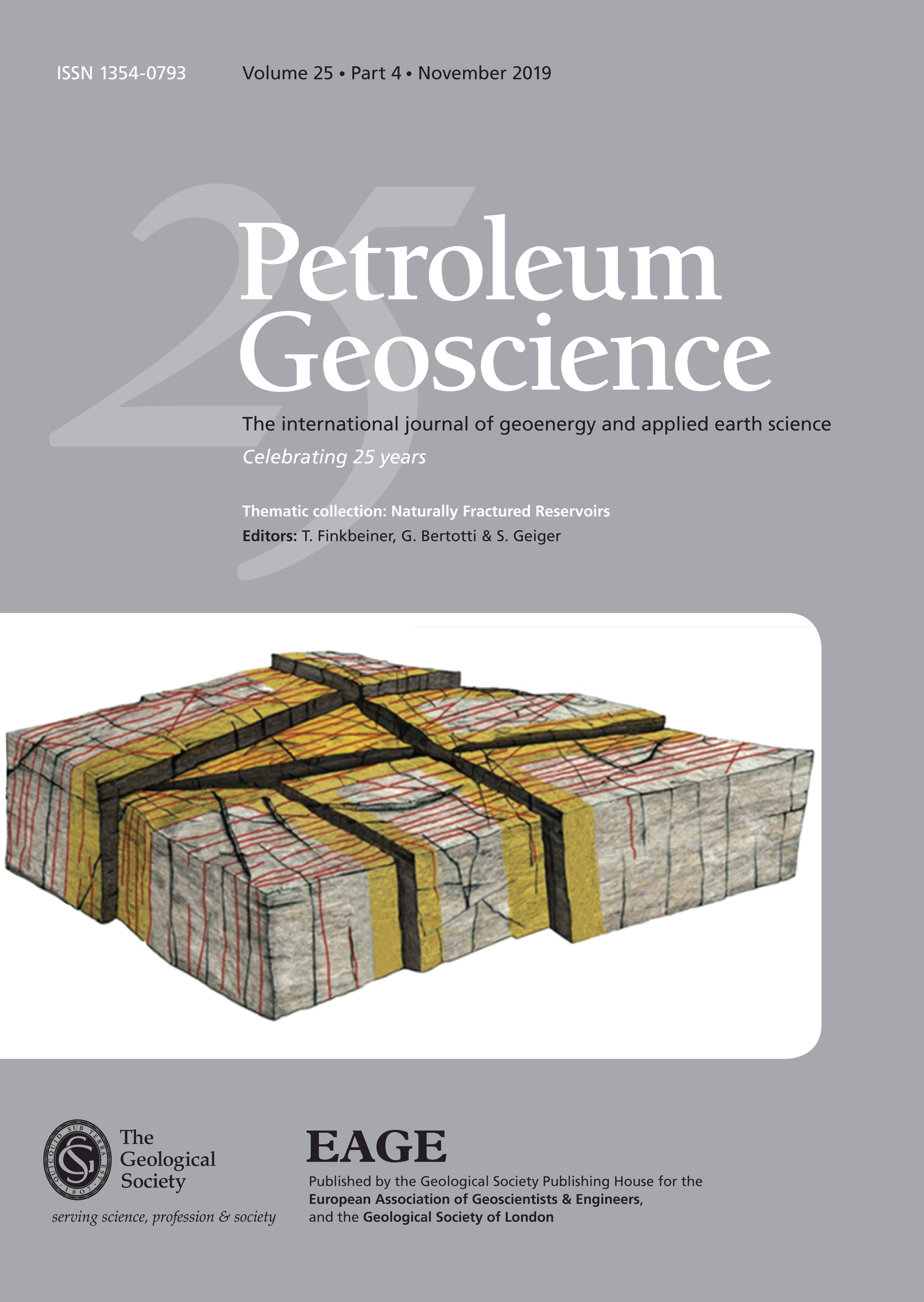
Full text loading...
Fracture scaling parameters are an important input for modelling of naturally fractured reservoirs, but are very difficult to derive from subsurface data. Extensive areas of exposure in the northern Kurdistan Region of Iraq provide useful outcrop analogues for nearby producing and potential hydrocarbon fields. A variety of data acquisition methods are used to analyse fracture systems in carbonates of the Upper Cretaceous Aqra–Bekhme Formation across a wide range of scales. When plotted on length–intensity graphs, the collated data lie below an upper envelope that follows a power-law distribution over five orders of magnitude between 0.1 and 3000 m, and which defines the maximum likely intensity of background fracturing across the region. Contouring the length–intensity data shows the distribution of intensities below the upper envelope, and allows modal and minimum likely intensities to be estimated. Likely causes for the observed variation in fracture intensities include the domainal nature of deformation, the proximity to high strain zones including faults, second-order effects such as ladder fractures, and variations in the thickness of mechanical layering.
Thematic collection: This article is part of the Naturally Fractured Reservoirs collection available at: https://www.lyellcollection.org/cc/naturally-fractured-reservoirs

Article metrics loading...

Full text loading...
References


Data & Media loading...

